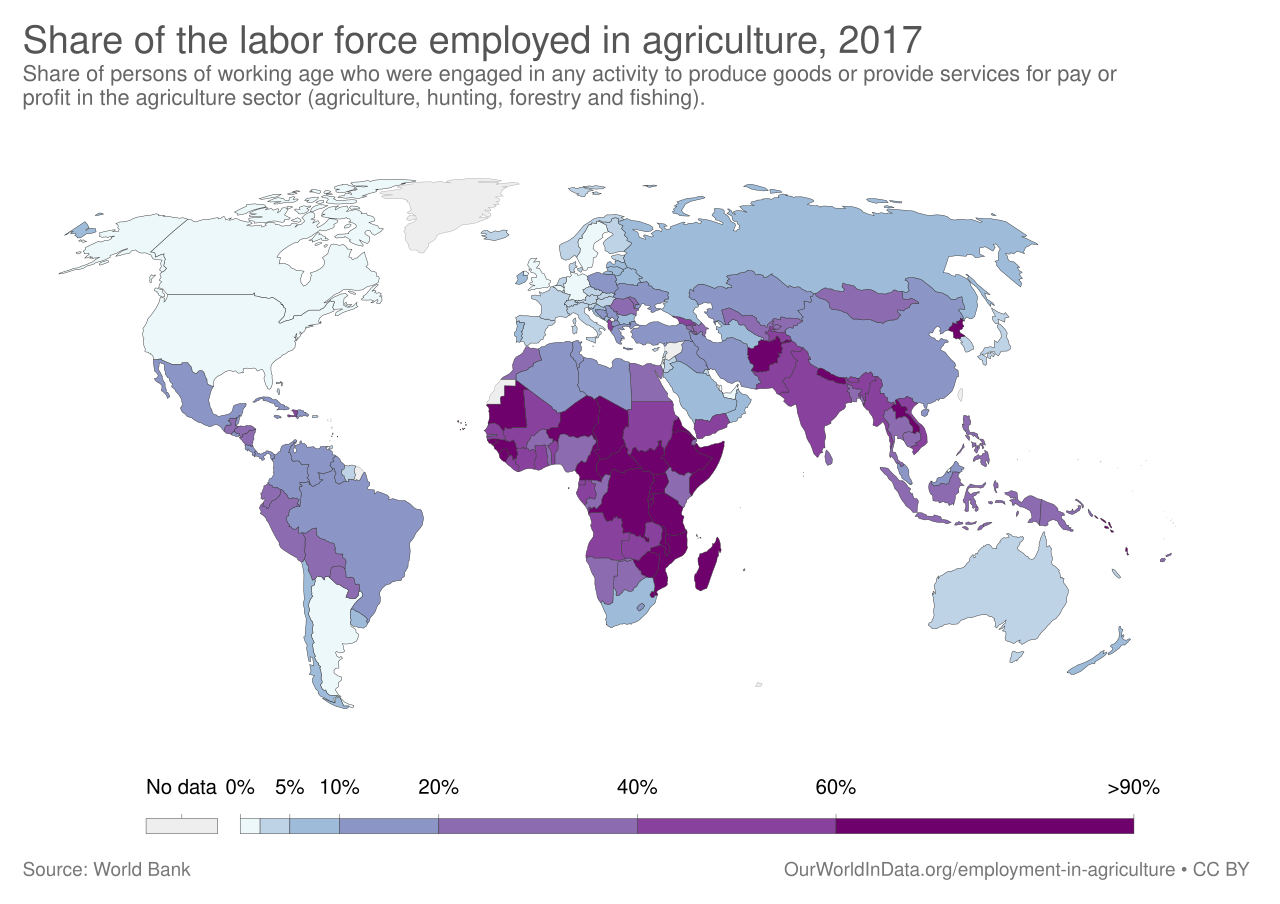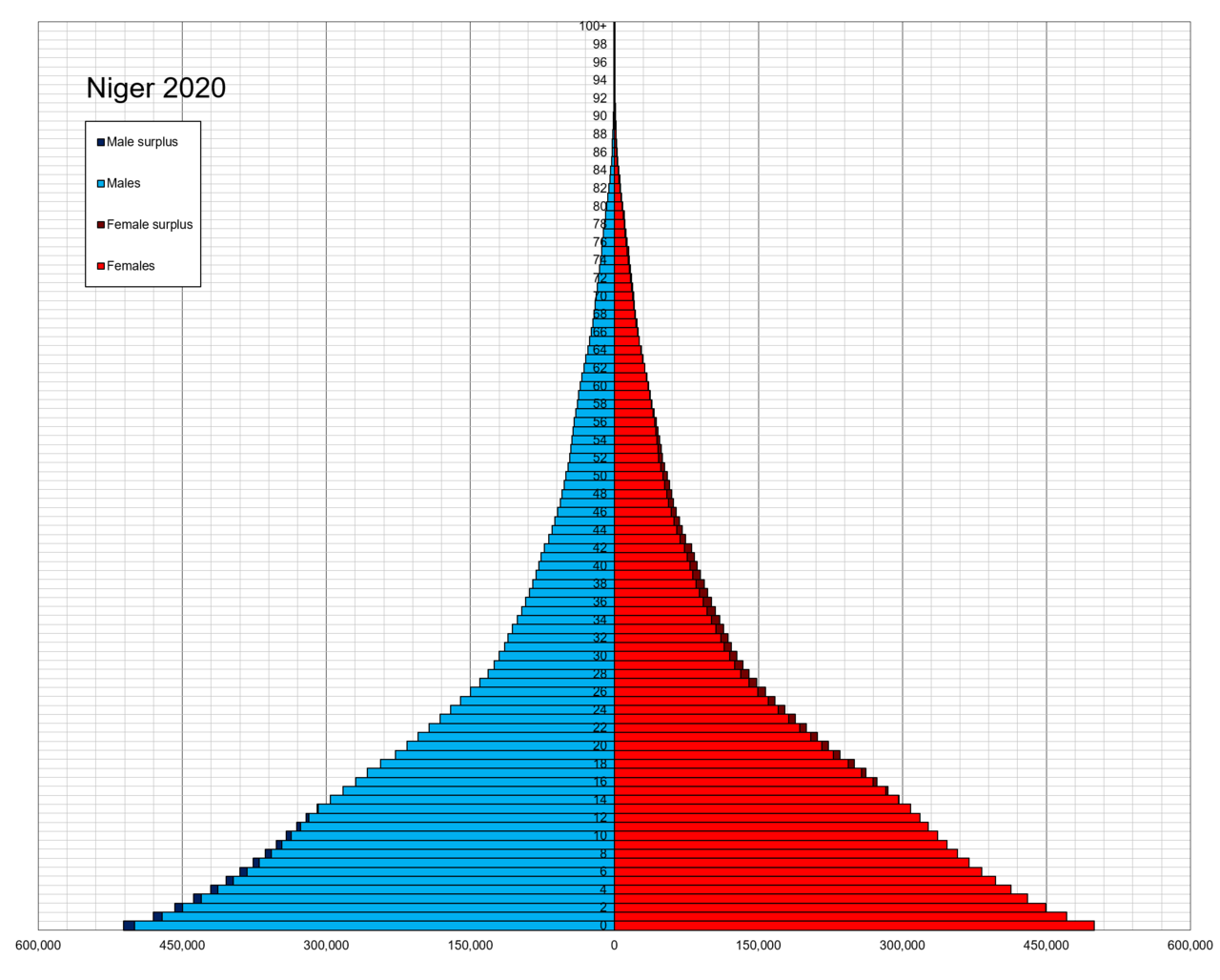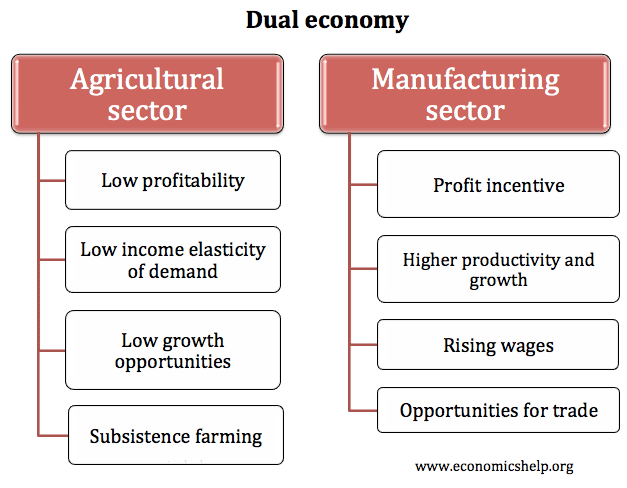AQA Specification focus:
‘The main characteristics of less-developed economies.’
Introduction
Less-developed economies display distinctive structural, social, and economic features that hinder long-term growth and development. Understanding these characteristics is crucial for analysing barriers to development.
Structural Characteristics of Less-Developed Economies
Low Per Capita Income
A central feature of less-developed economies (LDEs) is low per capita income, which results in limited living standards for the majority of the population. This often translates into poor access to education, healthcare, and basic infrastructure.
Per Capita Income: The average income earned per person in a country, calculated by dividing national income by total population.
Countries with low per capita income frequently experience a low savings ratio, restricting domestic investment and reinforcing a cycle of poverty.
High Dependence on Primary Products
Many LDEs are heavily reliant on the primary sector (agriculture, mining, raw materials) for both employment and exports. This dependence makes them vulnerable to price volatility in international markets and terms-of-trade fluctuations, which can destabilise growth prospects.

Share of the labour force employed in agriculture by country. Higher shares are concentrated in low-income regions, reflecting reliance on low-productivity primary activities. This structural feature helps explain low per-capita incomes and constrained domestic savings. Source
Limited Industrialisation
Industrial and manufacturing sectors are often underdeveloped, leading to a lack of diversified production. This restricts opportunities for higher productivity and value-added exports, leaving economies dependent on low-productivity activities.
Human Capital and Social Factors
Low Levels of Education and Training
A key characteristic of LDEs is limited human capital, with insufficient investment in education and skills training. This results in a workforce with restricted productivity and limited adaptability to technological change.
Human Capital: The stock of knowledge, skills, and health that workers possess, contributing to their productivity and economic output.
Low literacy and inadequate vocational training further constrain development and reduce opportunities for economic diversification.
Poor Health and Malnutrition
Health indicators are typically weak in less-developed economies. Issues such as high infant mortality, malnutrition, and limited access to clean water reduce labour productivity. Poor health also contributes to lower life expectancy, limiting long-term workforce participation.
Rapid Population Growth
LDEs often experience high rates of population growth, which places pressure on resources, infrastructure, and employment opportunities. This rapid demographic expansion can lead to youth unemployment, urban overcrowding, and environmental strain.

Population pyramid of Niger (2020). The broad base indicates a high birth rate and a large dependent youth population, features typical of many less-developed economies. This demographic structure can intensify pressure on schooling, healthcare, housing and labour markets. Source
Institutional and Financial Weaknesses
Weak Infrastructure
Infrastructure such as transport, communication, and energy networks is often underdeveloped. This raises production costs, restricts trade, and reduces the competitiveness of domestic industries.
Lack of Property Rights and Governance Issues
Institutional weaknesses, including inadequate enforcement of property rights, corruption, and political instability, undermine investment and discourage entrepreneurship.
Property Rights: Legal rights to use, control, and benefit from resources, assets, or property, enforceable by law.
Uncertain governance environments deter both domestic and foreign investors, limiting the potential for long-term economic development.
Shallow Financial Systems
Banking and credit systems in LDEs are frequently underdeveloped, restricting access to loans and financial services. This disproportionately affects small firms and rural populations, limiting opportunities for entrepreneurship and investment.
External Vulnerabilities
Heavy Dependence on Foreign Aid
Many less-developed economies rely on foreign aid and external financial assistance to support government spending, infrastructure, and social programmes. While aid can help alleviate short-term challenges, dependency may reduce incentives for structural reform.
Balance of Payments Constraints
Export earnings are often insufficient to cover import requirements, leading to persistent balance of payments deficits. Reliance on borrowing from abroad can result in debt dependency and financial instability.
Vulnerability to Global Shocks
Because of reliance on primary exports and foreign investment, LDEs are highly exposed to global economic fluctuations, including commodity price shifts, financial crises, and changing trade policies of advanced economies.
Inequality and Dualism
High Income Inequality
Income distribution in less-developed economies is typically highly unequal. Wealth and resources are often concentrated in the hands of a small elite, while the majority live in poverty.
Economic Dualism
Many LDEs demonstrate dualism, where a modern, capital-intensive urban sector coexists with a traditional, subsistence-based rural sector. This creates significant disparities in productivity, wages, and living standards between different regions and groups.

Schematic of a dual economy with characteristics of the agricultural and manufacturing sectors side-by-side. It clarifies how low-productivity, subsistence activity can coexist with a smaller, higher-productivity modern sector. This visual supports the Lewis dual-sector perspective on structural change. Source
Economic Dualism: The coexistence of advanced, high-productivity sectors alongside underdeveloped, low-productivity sectors within the same economy.
Dualism highlights the structural divide between rural and urban areas, contributing to uneven development and migration pressures.
Environmental and Resource Challenges
Resource Dependence
Excessive reliance on natural resources can cause economies to suffer from the resource curse, where revenues from resource extraction fail to translate into sustainable development.
Environmental Degradation
Deforestation, desertification, and pollution are common in LDEs, partly due to weak regulation and the necessity to exploit natural resources for short-term gains. This undermines long-term growth potential.
Summary of Key Characteristics
Less-developed economies can be understood through several interconnected features:
Low per capita income and widespread poverty.
High dependence on primary products with limited industrialisation.
Weak human capital from poor education, training, and health standards.
Institutional weaknesses including corruption, poor governance, and fragile property rights.
External vulnerabilities, including reliance on aid, debt, and susceptibility to global shocks.
Inequality and dualism, with persistent divides in income and productivity.
Environmental pressures from resource dependence and degradation.
FAQ
The informal sector is often large in less-developed economies, providing employment when formal jobs are scarce. It includes small-scale trade, unregistered businesses, and casual labour.
While it helps absorb surplus labour, it typically offers low wages, poor working conditions, and no legal protections. This can hinder productivity growth and tax revenue generation.
‘Brain drain’ occurs when skilled workers emigrate to seek better wages and opportunities abroad.
It reduces the stock of human capital available domestically.
It can worsen shortages in key sectors such as healthcare and education.
However, remittances from emigrants can provide important financial support for households and foreign currency earnings.
Dualism often drives workers from low-productivity rural sectors into urban areas where modern industries appear more attractive.
However, limited urban job creation can result in high unemployment and the growth of informal settlements. Migration therefore reflects economic disparity rather than immediate access to secure employment.
High population growth means more resources must be directed towards meeting basic needs such as education, healthcare, and housing.
This diverts funds away from capital investment, slowing the development of infrastructure and industries. As a result, it can perpetuate a cycle of low productivity and underdevelopment.
LDEs often depend on agriculture and natural resources, which are directly affected by changing weather patterns.
Poor infrastructure limits their ability to adapt to floods, droughts, or rising sea levels.
Limited financial resources reduce investment in climate resilience.
Dependence on primary exports leaves them vulnerable to environmental shocks disrupting output and trade.
Practice Questions
Identify three main characteristics of less-developed economies. (3 marks)
1 mark for each correct characteristic identified, up to a maximum of 3 marks.
Acceptable answers include:
Low per capita income
High dependence on primary products
Limited industrialisation
Weak human capital (e.g. poor education and health)
Institutional weaknesses (e.g. poor governance, weak property rights)
High income inequality
Economic dualism
Vulnerability to global shocks
Heavy reliance on foreign aid
Explain how high dependence on primary products can act as a barrier to economic development in less-developed economies. (6 marks)
1–2 marks: Basic identification of primary product dependence (e.g. reliance on agriculture, raw materials).
3–4 marks: Clear explanation of why this is a barrier, such as:
Price volatility leading to unstable export earnings
Unfavourable terms of trade
Limited opportunities for value-added production
5–6 marks: Developed analysis with linked consequences, such as:
Balance of payments problems restricting imports of capital goods
Restriction on long-term growth due to lack of diversification
Poverty trap reinforced by low and uncertain export revenues
Award full marks if the answer is well-explained, uses correct economic terminology, and shows understanding of how primary product dependence links to development challenges.

